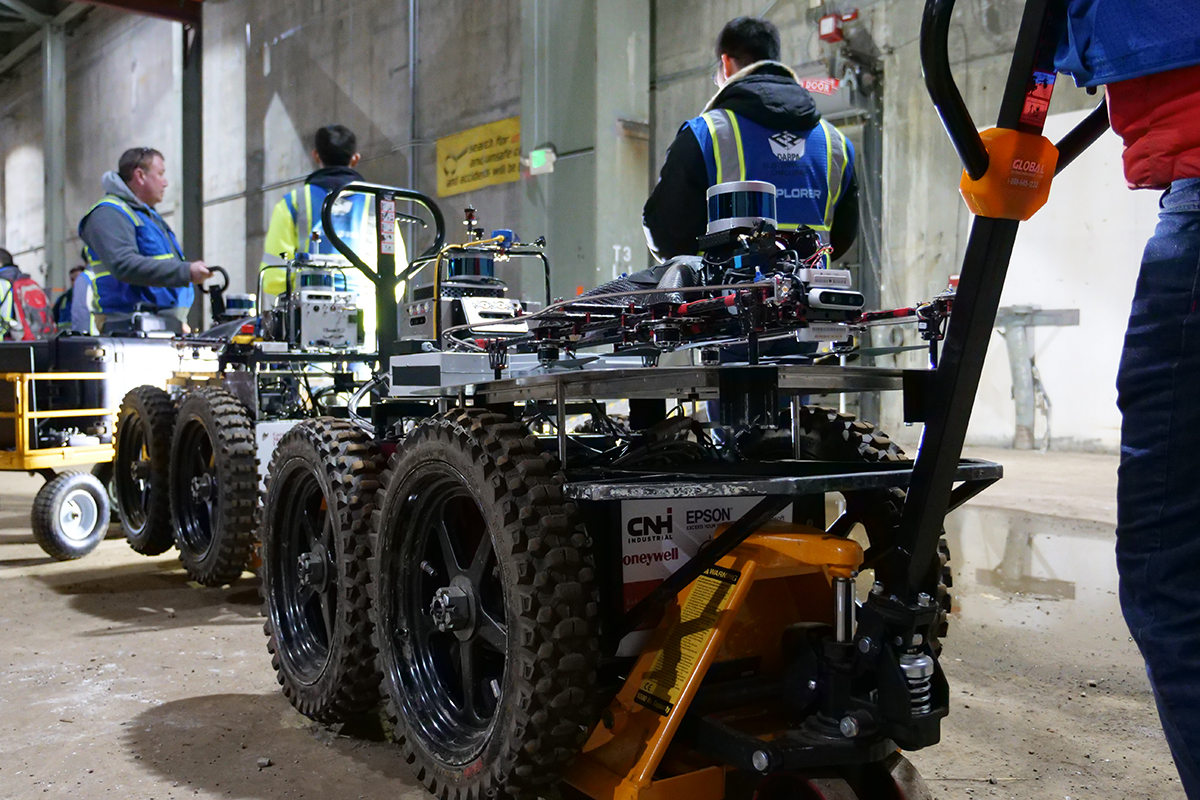Team Explorer Finishes Second in DARPA Competition Urban Circuit Was Second of Four Events in Subterranean Challenge
Byron SpiceThursday, February 27, 2020Print this page.

Team Explorer from Carnegie Mellon University and Oregon State University battled to the end in the DARPA Subterranean Challenge's Urban Circuit competition, ultimately finishing second.
Explorer was tied with CoSTAR — a team led by the Jet Propulsion Laboratory that included MIT, CalTech and South Korea's KAIST — going into the last run on the last day of competition on Wednesday. Feb. 26. But CoSTAR located and identified more artifacts during its run, giving it a final score of 16 to Explorer's 11.
The Subterranean Challenge, sponsored by the Defense Advanced Research Projects Agency, is a multiyear competition in which autonomous robots map underground environments and look for objects — such as simulated human survivors, backpacks and emergency equipment — much as a first responder might during an emergency response.
Explorer deployed various combinations of its three ground robots and four drones during its runs.
The CMU Robotics Institute's Sebastian Scherer, who co-leads the team with Matt Travers, a systems scientist, said the performance of the team's drones was a highlight of the competition.
"They covered a lot of ground," he said, and worked effectively in air shafts and other tight spaces. Piggybacking and launching the drones from the team's wheeled ground robots also worked well, he added.
The team's object-detection methods didn't work so well, said Scherer, an associate teaching professor. One reason was that the unfinished nuclear power plant in which the competition took place is much more cavernous than the vacant hospital where the team practiced before the event.
The last run, which pitted the two leading teams head-to-head, was not the only moment of high drama for Explorer. During one of the team's four runs over Urban Circuit courses, one of its wheeled robots flipped completely over while descending stairs, landing on its wheels at the bottom with minimal damage. One of the team's drones, after flying down a shaft, began exploring but flew too low and hit the edge of a door.
During Thursday's award ceremony, DARPA even presented the team with a certificate for "Down to the Wire Report," recognizing how it reported an artifact — and earned a point — mere seconds before time expired on its 60-minute run on the course.
"You had us on the edge of our seats," said Timothy Chung, DARPA's Subterranean Challenge program manager.
In August, Explorer decisively won the challenge's Tunnel Circuit, in which autonomous robots explored mine tunnels. A third event, the Cave Circuit, will take place this August inside natural caves. A final event in August 2021 will include elements of all three subterranean environments.
Explorer is one of seven teams that will receive up to $4.5 million from DARPA to develop hardware and software for the competition. It received additional support in the Urban Circuit from Microsoft, Honeywell, Epson, the Richard King Mellon Foundation and CNH Industrial.
Byron Spice | 412-268-9068 | bspice@cs.cmu.edu<br>Virginia Alvino Young | 412-268-8356 | vay@cmu.edu
